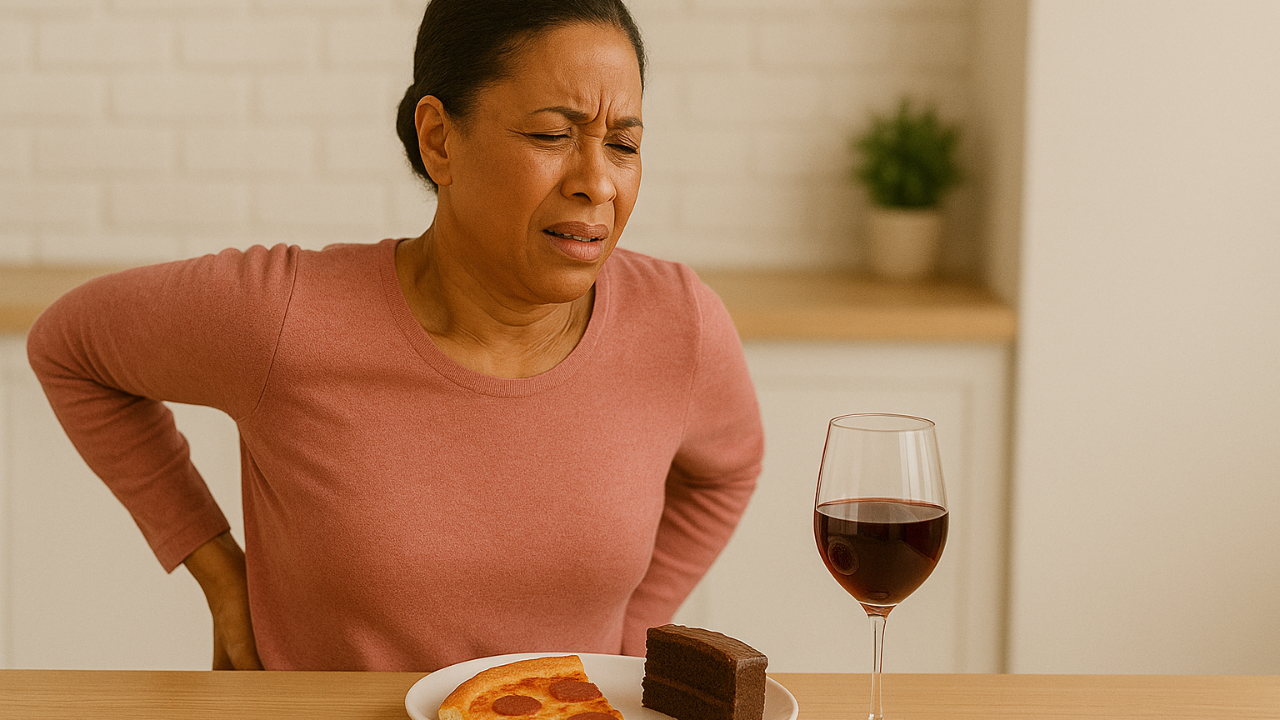Are Carbs and Sugar Secretly Fueling Your Pain, Inflammation, and Aging?
Aug 02, 2025
You already know the afternoon bagel or nightly bowl of ice cream isn’t doing your health any favors. Maybe you’re waking up achy, feeling more bloated, or noticing the weight around your middle won’t budge no matter what you try. If this sounds familiar, you’re not alone—and there’s a reason it feels harder as you move through perimenopause or menopause. Those daily carb-heavy choices may be silently fueling your pain, fatigue, and stubborn weight gain.
The Insulin Spike: What Happens After You Eat Sugar or Fast Carbs
When you eat sugary foods or refined carbs (think pastries, soda, pasta, or even "healthy" granola bars), your blood sugar spikes. In response, your body releases insulin—a hormone that helps shuttle glucose into your cells for energy. But when this happens repeatedly:
-
Inflammation rises. Chronically high insulin increases pro-inflammatory molecules, which can worsen joint pain, swelling, and even digestive discomfort. Look for signs like morning stiffness, frequent headaches, or bloating after carb-heavy meals.
-
Cellular aging accelerates. Excess sugar binds to proteins in a process called glycation, which damages tissues and speeds up skin aging, organ decline, and even brain fog. Early wrinkles, slow recovery after exercise, or memory lapses can all be red flags.
-
Fat storage increases. Insulin is a storage hormone—especially around the belly and hips. If you notice weight gain in the midsection despite eating the same as before, or frequent energy crashes, your insulin may be part of the problem.
Why It Feels Worse in Perimenopause and Menopause
Hormonal shifts during perimenopause and menopause lower estrogen and progesterone, which play a role in how efficiently cells respond to insulin. With less estrogen, muscles and liver become less able to take up glucose, so the body releases more insulin to compensate. Over time this can lead to insulin resistance, which drives inflammation. Each time you eat sugary foods or refined carbs, the resulting blood sugar spike worsens this cycle, leading to more joint pain, fluid retention, and stiffness. Many women notice new aches and belly fat even if their diet hasn’t changed, because their hormonal environment has shifted in a way that amplifies the effects of poor carb choices.
Are Your Carb Choices Sabotaging Your Longevity?
Even if you think your insulin is normal, you might be surprised—many people with aches, stubborn belly fat, or afternoon crashes already have early signs of high insulin. High insulin isn’t just about weight—it quietly fuels inflammation, oxidative stress, and cellular damage over time:
-
Chronic pain conditions like arthritis and fibromyalgia, as inflammation sensitizes nerves and worsens pain signals.
-
Faster aging, from skin wrinkles to brain aging, due to glycation and poor cellular repair.
-
Increased risk of diabetes, heart disease, and dementia as long-term insulin resistance disrupts metabolism and damages blood vessels.
The big question: Could your afternoon snack or daily dessert be contributing to the pain, weight struggles, and accelerated aging you’re trying to fight?
How to Break Free from Sugar Cravings (Without Feeling Deprived)
Cravings aren’t just about willpower—they’re a biochemical response to blood sugar swings. Here’s how to reset:
1. Eat Protein with Every Meal
30–40g of protein at meals balances blood sugar, boosts metabolism, and keeps you full longer. It also supports muscle mass and hormones during menopause.
2. Choose Smart Carbs
Swap white bread and pasta for quinoa, lentils, or sweet potatoes. These have more fiber and nutrients, leading to steadier blood sugar.
3. Pair Smart Carbs with Fat and Fiber
Combining wholesome carbs with healthy fats (like avocado or nuts) and fiber-rich foods (veggies, chia seeds) slows sugar absorption and reduces insulin spikes.
4. Tame Cravings with Mineral Support
Low magnesium or chromium can intensify sugar cravings. Whole foods like leafy greens, pumpkin seeds, and eggs help replenish these nutrients.
5. Plan Your Treats
Instead of cutting sugar cold turkey, allow planned indulgences. Mindful enjoyment prevents the binge-restrict cycle.
What If You Could Feel Better in Just a Few Weeks?
Many women notice reduced pain, better sleep, and more energy within weeks of balancing blood sugar. The strategies above stabilize insulin, reduce inflammation, and can quickly lessen joint stiffness and energy crashes. Imagine fewer aches, steady energy, and the confidence of knowing your food choices are adding years to your life—not taking them away.
Ready to Reduce Pain, Inflammation, and Accelerated Aging?
The Everyday Upgrade Coaching Bundle will guide you step-by-step to reset your habits, balance your blood sugar, and reclaim your energy—without dieting extremes. Join here →
References:
-
Impact of glycation and insulin resistance on aging – National Library of Medicine
-
Menopause, insulin resistance, and metabolic health – National Library of Medicine

